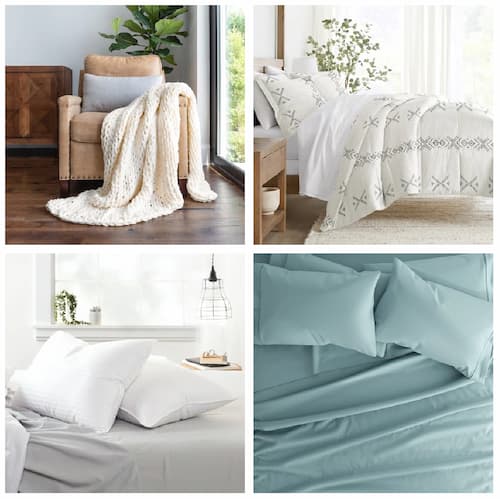What Is Jacquard Fabric? Here’s Why You’re Seeing It Everywhere-by Shivani Vyas
Take inspiration from one of this year’s most popular textiles.
Brittany Ambridge
From fashion to home decor, Jacquard fabrics are everywhere in 2024. But what actually is Jacquard? You might be surprised to learn that the term ‘Jacquard’ doesn’t actually hint at a specific material or pattern, but the weaving process itself. So, any natural or synthetic fabric, from linen to silk to polyester, woven using the right process, can be a Jacquard fabric.
What makes the Jacquard process exceptional is that it can produce a myriad of motifs and colors without relying on additional embroidering, dyeing, or printing techniques. For this reason, “Jacquard designs can be incredibly complex, with the planning and the loom work itself controlled by computerized systems [and historically via punch cards] that lift up certain areas of the warp threads so that weft threads can be layered underneath,” says Kellie Smith, fabric designer and co-founder of SmithHönig.
Learn the fascinating history of this gorgeous fabric, and see why designers are raving about its recent comeback in the home decor space.
Related: 7 Fabric Trends Taking Over Interior Design in 2024
The History of Jacquard Fabrics
There may be a resurgence of Jacquard now, but the fabric’s rich history dates back to the 19th century, when the Jacquard fabric—named after its inventor, Joseph Marie Jacquard—revolutionized textile production. Before the Jacquard loom, manual pattern weaving was cumbersome, and complex designs often relied on additional methods like fabric printing or embroidery.
The Jacquard process was first patented in 1805 when Napoleon saw the potential of Jacquard’s loom in Lyon during a real-time demonstration, sending Jacquard to Paris for mass production shortly after. And since the Jacquard loom used punched cards, weaving intricate patterns—even damasks and brocades—directly into the fabric on a mass scale became possible, significantly scaling back labor costs and production time.
Jacob Fox
Why You’re Seeing Jacquard Everywhere in 2024
Jacquard continues to flood decorating scenes worldwide. “Jacquard adds so much texture to a room, and there’s something inherently classic and luxurious about it,” Smith says. “Another nice thing about jacquard is that it ages gracefully, becoming even softer over time. It can sometimes fade in unique ways. We find that beautiful. It adds character and a sense of lived-in luxury to a space,” she says.
As a fabric designer, Smith always draws inspiration from the rich history and artistry of jacquard and other historic textiles in her production lines. “Many of our fabrics are designed to capture that sense of softness and wear that occurs over time. Yes, our fabrics are printed, but we love building in a bit of that patina from day one since it’s so evocative and scene-setting,” she says. “The idea that jacquard punch cards and looms influenced the development of early computers is fascinating! For us, as we use technology and digital manipulations to create new patterns and print fabric—and the story has come full circle.”
How to Use Jacquard Fabric in Your Home
Smith encourages layering Jacquard with less textural patterns for a well-traveled, maximalist feel. Since Jacquard can pair with other prints beautifully, Smith says creating a rich, “collected-over-time” look can be effortless.
To start using Jacquard at home, Smith suggests refreshing a luxe headboard, bench, or window treatments. “We love Jacquard on something that gets a lot of ‘touch,'” she says.
Another opportunity to bring Jacquard indoors is sprucing up your tablescapes. “There’s nothing more luxurious than a jacquard tablecloth,” she says. “A colorful woven cloth layered with beaded chargers, a mix of old and new China patterns, luxe napkins, and colorful glassware is, in our opinion, the ultimate use of Jacquard. It’s easy. It’s timeless. It’s gorgeous.”
“The way jacquard ages is also unique, and several of our SmithHönig fabric patterns are inspired by that sense of softness and wear that occurs in older Jacquard. Some say that the intricacy of jacquard looms led to the invention of early computers, so that definitely feels like a full circle moment,” Smith says.
For more Better Homes & Gardens news, make sure to sign up for our newsletter!
Read the original article on Better Homes & Gardens.
Better Homes & Gardens Latest Stories

:max_bytes(150000):strip_icc():format(jpeg)/102780692-86d0605f292e45ebb924e028506f9c2f.jpg)


